
News • Hypothyroidism as risk factor
To fend off dementia, take care of the thyroid
Older people with hypothyroidism, also called underactive thyroid, may be at increased risk of developing dementia.

Older people with hypothyroidism, also called underactive thyroid, may be at increased risk of developing dementia.
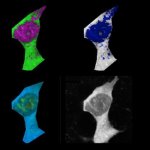
Researchers have shown that aggregation of amyloid-beta, one of two key proteins implicated in Alzheimer’s disease, causes cells to overheat and ‘fry like eggs.’

A research team in Spain and the US has created 3D-printed acoustic holograms to improve the treatment of diseases like Alzheimer's and Parkinson's, among others.

A new type of AI companion is being designed to aid memory recollection, boost confidence and combat depression in people living with Alzheimer’s disease and other types of dementia.

A mathematical analysis of data obtained with a MRI approach can identify brain cell damage in people at early stages of Alzheimer's.

When combined with genetic risk factors, the test was up to 93 percent accurate at identifying people at risk of Alzheimer's dementia.
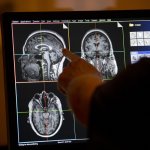
Cleveland Clinic has launched a landmark study to better understand why millions of people around the world suffer from brain diseases, with the goal of pinpointing disease biomarkers early, well before clinical symptoms present themselves.
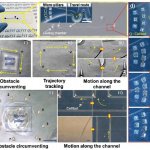
The joint research team of Prof. Hongsoo Choi (DGIST) & Prof. Sung Won Kim (Seoul St. Mary’s Hospital), developed an hNTSC-based microrobot for minimally invasive delivery into the brain tissue via the intranasal pathway.
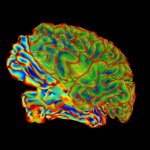
For the first time, researchers have used human data to quantify the speed of different processes that lead to Alzheimer’s disease and found that it develops in a very different way than previously thought. Their results could have important implications for the development of potential treatments.

Researchers at Durham University are working on a new infrared light therapy that might have the potential to help people with dementia. In the approach, people wear a specially adapted helmet which delivers infrared light deep into the brain for six-minutes per treatment. This stimulates mitochondria that generate most of the chemical energy needed to power the biochemical reaction in the…
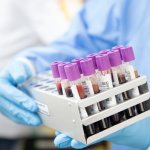
Researchers at the DZNE and the University Medical Center Göttingen (UMG) have identified molecules in the blood that can indicate impending dementia. Their findings, which are presented in the scientific journal “EMBO Molecular Medicine”, are based on human studies and laboratory experiments. Various university hospitals across Germany were also involved in the investigations.
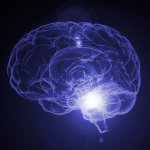
A miniscule area in the brain, known as the locus coeruleus (LC), or blue spot, can help to identify an increased risk of Alzheimer’s disease at a very early stage. The LC is hidden deep in the brainstem and can only be detected with advanced MRI equipment. Heidi Jacobs (Maastricht University/Harvard Medical School) used MRI scans to show that the tau protein can begin to spread in the LC three…

If the suspicion of Alzheimer's disease creeps up, those affected must prepare themselves for lengthy and complex procedures until the case is clear. A team from Empa and the Cantonal Hospital of St. Gallen is now in the process of developing a blood test that will enable a reliable diagnosis using atomic force microscopy (AFM).

A two-minute passive-test that measures people’s brain waves in response to a series of images, 'Fastball EEG', could help expand early dementia diagnosis.

The study identified that a probable cause of Alzheimer's disease was the leakage from blood into the brain of fat-carrying particles transporting toxic proteins.
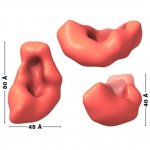
Small aggregates of proteins known as Aβ oligomers are suspected as the main cause for the development of Alzheimer’s disease. However, it is not yet clear where and under what conditions these toxic aggregates form.
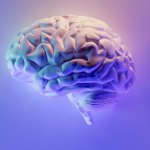
A study by an international research group identified 15 novel biomarkers that are linked to late-onset dementias. These biomarkers are proteins, which predict cognitive decline and subsequent increased risk of dementia already 20 years before the disease onset. The proteins are related to immune system dysfunction, blood-brain-barrier dysfunction, vascular pathologies, and central insulin…

An EPFL scientist has found that brain fingerprints – or maps of the neural connections within our brain – can be used to detect a decline in cognitive ability. That’s because the fingerprints are harder to detect in people who already have mild cognitive impairment.

Dr. Hayder Amin and Dr. Caghan Kizil from the DZNE’s Dresden site aim to speed up developing drugs against brain diseases through cutting-edge technology. To this end, they are generating an innovative technology platform, termed “i3D-Markers”, based on high-density microelectrode arrays and 3-dimensional networks of human neurons. Compounds to be tested will be dripped onto this setup, and…
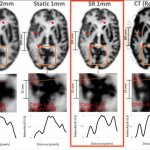
A new imaging technique has the potential to detect neurological disorders at their earliest stages, enabling physicians to diagnose and treat patients more quickly.

Research teams from TU Darmstadt, British and US universities are focusing on one possible main process that leads to the death of brain cells in their investigation of the causes and mechanisms of Alzheimer's disease.

The U.S. Food and Drug Administration approved Aduhelm (aducanumab) for the treatment of Alzheimer’s, a debilitating disease affecting 6.2 million Americans. Aduhelm was approved using the accelerated approval pathway, which can be used for a drug for a serious or life-threatening illness that provides a meaningful therapeutic advantage over existing treatments.
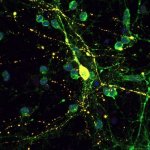
A new idea for treating Alzheimer’s disease could eradicate the toxic proteins most closely linked to cognitive decline in the places where they do the most damage, a study from researchers at Columbia University Vagelos College of Physicians and Surgeons suggests. The study was published online in Science Translational Medicine.

In Sweden, there are over 2 million legally owned firearms. At the same time, up to 150,000 people live with a diagnosis of dementia. In an aging society such as Sweden, legislators will face challenges in gun ownership. A new registry-based observational study by researchers from NVS, Karolinska Institutet, published in the Journal of Alzheimer’s Disease shows a need for strategies for this…
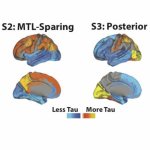
Alzheimer's disease is characterized by the abnormal accumulation and spread of the tau protein in the brain. An international study can now show how tau spreads according to four distinct patterns that lead to different symptoms with different prognoses of the affected individuals. The study was published in Nature Medicine.